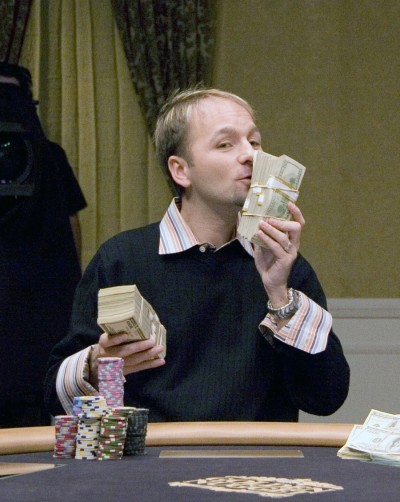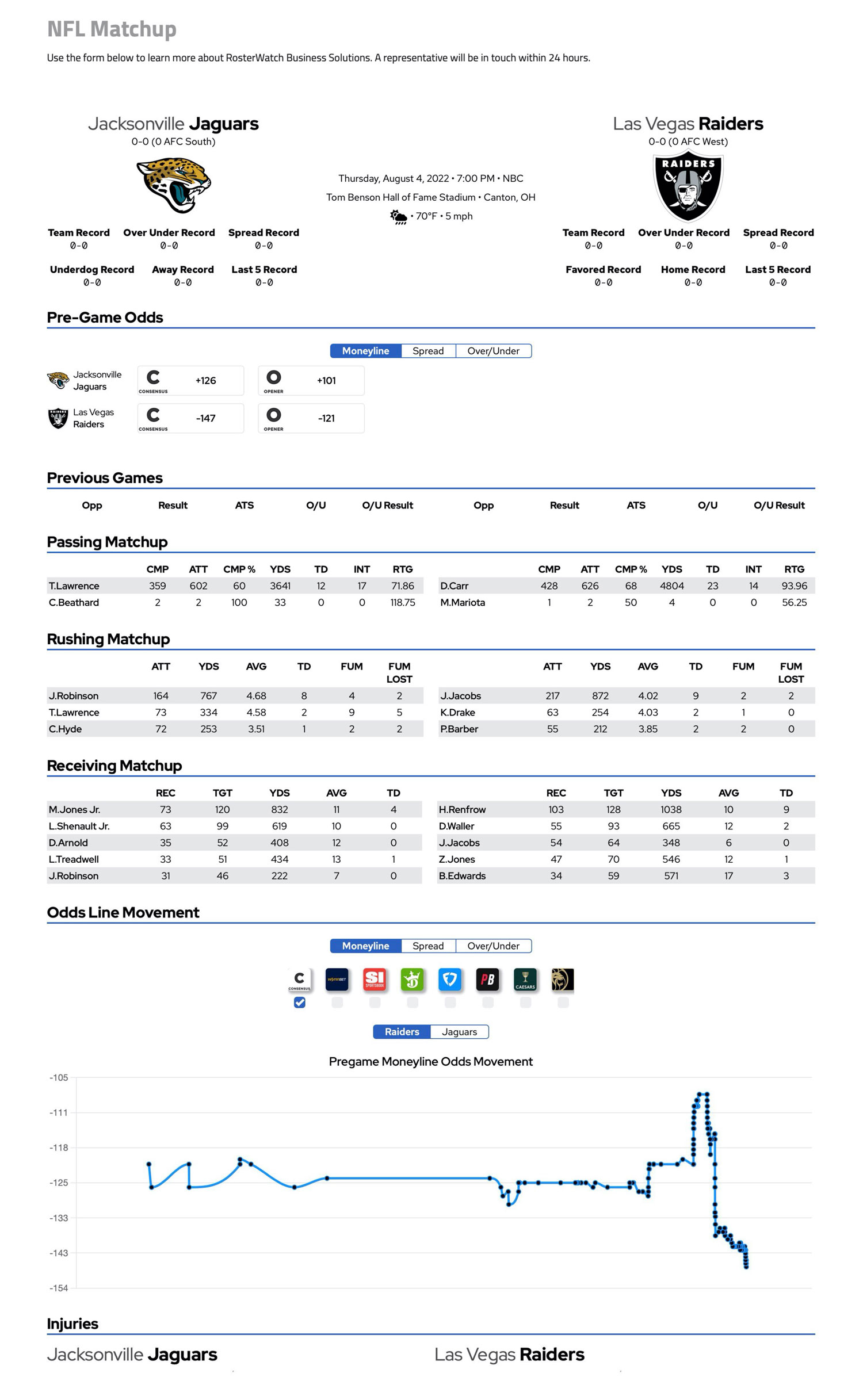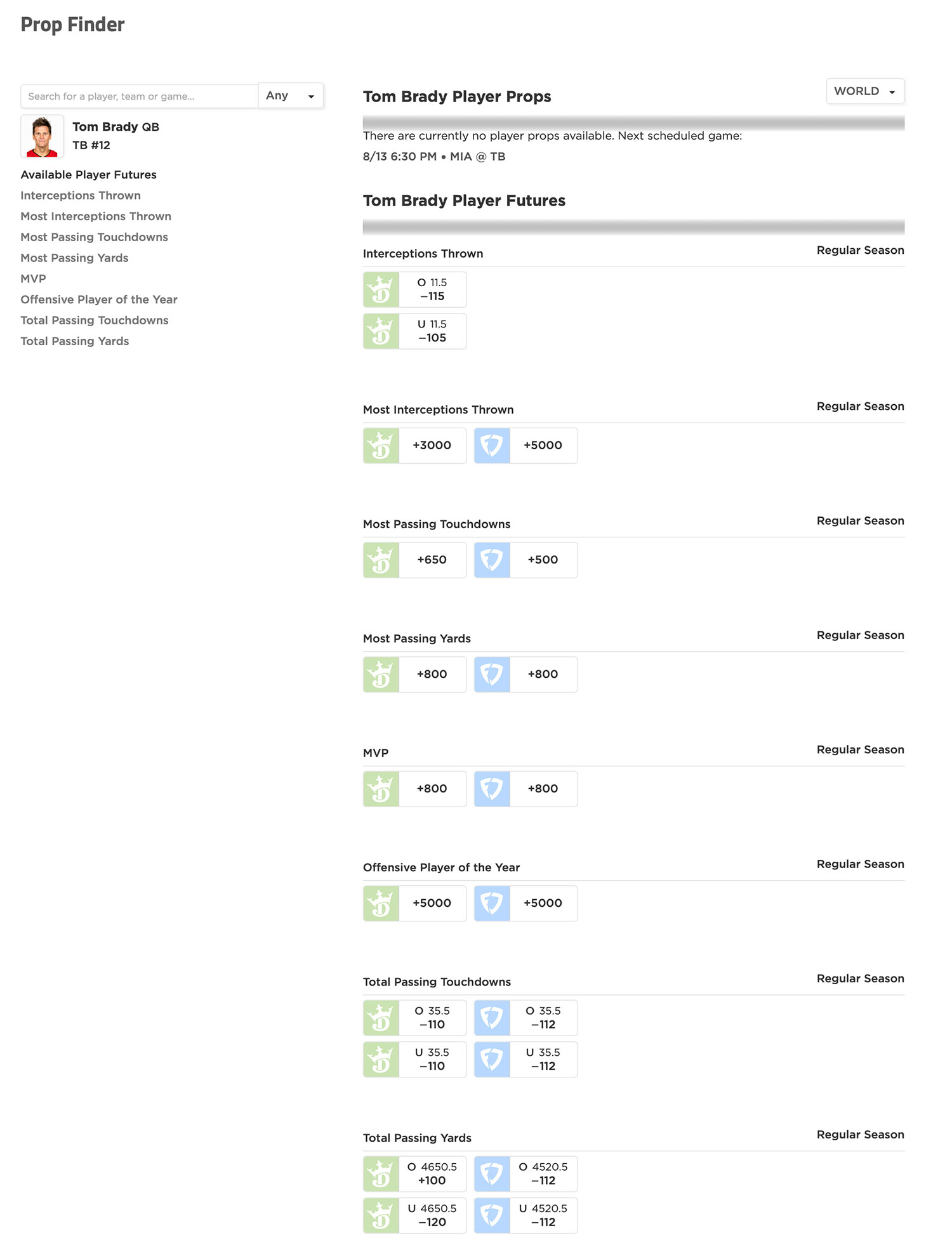Bill Byrne: Small Ball- Advanced Principles of Blind Waiver Bidding
Principles Of Waiver Wire Blind Bidding
Bill Byrne, Rosterwatch.com Featured Analyst

A style of poker popularized mainly by Gus Hansen (and made even more famous by Daniel Negreanu) is called “small ball.” The idea is to play lots of hands cheaply and then outplay the amateurs who were playing only the more selective, premium hands. The idea behind small ball was if the flop didn‘t hit their hand, they hadn’t invested very much, while giving themselves many more chances to hit the ’crazy’ flop that beat the guy with the premium hand. They let the other guy drive the action and seldom overbid or went “all in.”
I’ve played enough fantasy seasons of blind waiver bidding to develop a ‘small ball’ strategy that works for me. Just like some of yours, a fair share of my waiver pick-ups will turn out to be average or even busts, despite the study I put in-mainly in the off-season-identifying potential diamonds in the rough.
Before we get to the strategy, we must set some assumptions and parameters for how to make it work:
You have to have a reasonable idea of how many players you would normally pick up per season if you were in a non-bidding Waiver system. You can exclude defenses and kickers from this number if your blind bid Waiver system is immediately followed by open waiver free agent pick-ups until waivers are re-locked for the next weekend’s games.
As a VERY active weekly roster manager, I have had a long history of playing in leagues with transaction limits and was quite uncomfortable playing in leagues that allowed less than 25 Waiver pick-ups per season. Allowing 5 pick-ups for defense and kicker changes, 20 position player pick-ups per season is a tight number, but one that I can live with. Given a season blind bidding budget of $1000, this means that my player acquisition cost must average approximately $60 per week for the 16 weeks of waiver bidding.
There is one truism of Blind Waiver Bidding. Early-season bids will be higher than mid-season bids, which will be higher than late-season bids.
There are at least three reasons for this:
A) It is just human nature. Just like in real life, owners overspend until they realize that they are running out of money. At that point, they become much more restrained in their personal spending. Fantasy owners are no different.
B) Every year there are a few phenomenal early break-outs. Nobody wants to miss out on “that guy.” Even some fantasy experts are highly are vulnerable to an “all-in” mentality, and are not afraid to spent 50% of their annual budget or more on that “next stud” player.
A couple of seasons ago, a very good fantasy player in my league spent $99 of his $100 budget on Brandon Jackson after the week 1 season-ending injury to Ryan Grant. There are always guys that “flash” only to disappear later. Just like when buying stock, study the ‘fundamentals’, but remember even the best looking scenarios can prove to be wrong. And if you overpay, you’d better are right.
C) The guy you pick up early has the potential to help your team for the entire season, therefore early season pick-ups are logically worth more than late season ones.
I have a rule to NEVER to spend more than 25% of my budget on any one player, and I do so knowing that I had better be right, because that pick-up will severely impact the rest of my season. It is far better to let the other owner overspend, even if it means missing out on the potential stud.
The risk is just too great and there will always be other opportunities later. By the way, last year I picked up Cam Newton early for $248. Understand that I got lucky on two counts: his break-out performance wasn’t a fluke, and I wasn’t outbid by someone who just had to have him, because I would not have won him if somebody had bid $250.
I’m constantly churning the bottom of my roster searching for value. I realize, however, that most owners will only bid for immediate need or additional depth. Few bid primarily for value, so perceived value WILL BE the primary consideration in how high they will bid on a player, and of course will determine how much you will have to bid to win that player.
Each week, after waiver bids are opened, some host sites allow you as owner to see all bids, whether successful or not. Others only allow you to see the winning bids. Either way, by logging all of the bids you see, after a few weeks you can get an idea of how each of the other owners think. You can then make educated guesses if they are likely to bid on a certain player and you can also get a pretty good clue as to how much they‘ll bid.
It doesn’t take a gemologist to tell the difference between pyrite and gold; gravel or a diamond in the rough. In fantasy football, especially against top notch competition, while it does help to be a “gemologist” when it comes to discerning fantasy value, “the small ball” approach means that you try to bid on a player on the first evidence of a possible break-out and before the break-out becomes apparent to the other owners in your league.
That way it doesn’t cost you very much if that ‘diamond’ turns out to be just another piece of gravel.
However, at the point when even a few other owners become aware that it is very likely a true break-out, the price will go WAY UP. Successfully playing small ball with your waiver pick-ups absolutely requires early and continuous research, but even more important is the willingness to pull the trigger earlier than your league mates, even if it turns out that you were wrong. Of course, this won’t work very well if you always feel you must win the bid and feel the need to get that true impact player to solve an immediate roster need.
With that background, here is the strategy that I have found to be optimum for me:
I front-end load the first four weeks of my waiver budget. Assuming I want to win 20 transactions on a $1000 budget based on 16 weeks of waivers, my average amount per week for weeks 1 through 4 will be about $140. Note that picking up Newton last year cost me almost two weeks of “early” waiver money, so I had to re-budget to get back on track in order to have enough money left to bid for the stretch run.
Bidding will naturally cool off during weeks 5 through 13, so I allow myself only about $40 per week. And for the play-off weeks 14-16, I’ll only need $20 per week to get the guys I want.
Here’s a final tip: If your league allows open free agency after bids are opened until the beginning of the first game for the week, you’ll want to try to pick up for free some of your remaining position players and almost all of your shopping list of defenses and kickers off from open waivers immediately after bids are opened, thereby beating the other owners to the punch.
Almost every professional poker player has gone broke at some point in their career. The successful ones finally realized that playing professional poker is as much about prudent risk management and good money management as it is playing great poker. The ‘small ball’ approach to Waiver Wire Blind Bidding has allowed me to make some great player acquisitions over the years while keeping me from going broke on my waiver budget before my season was over.







